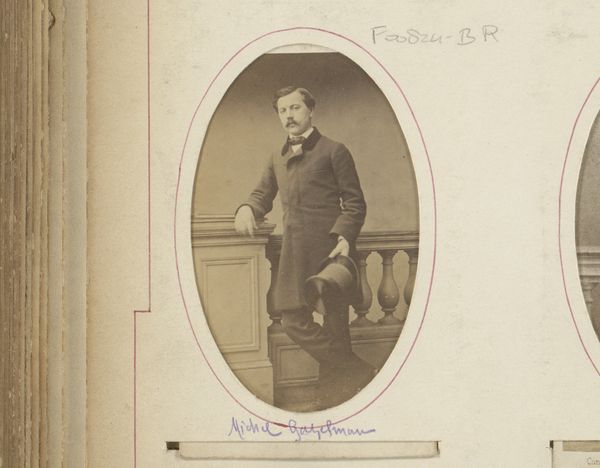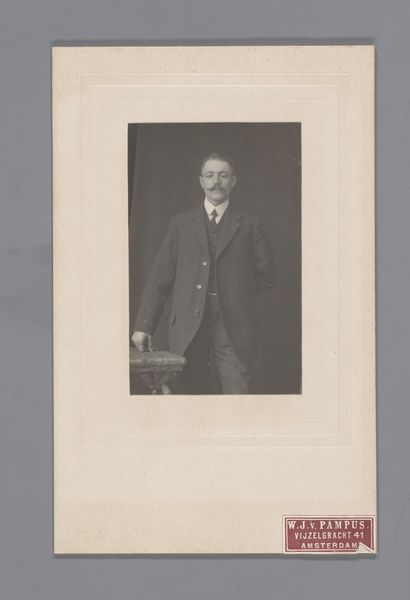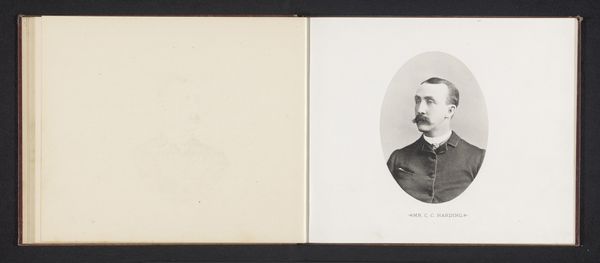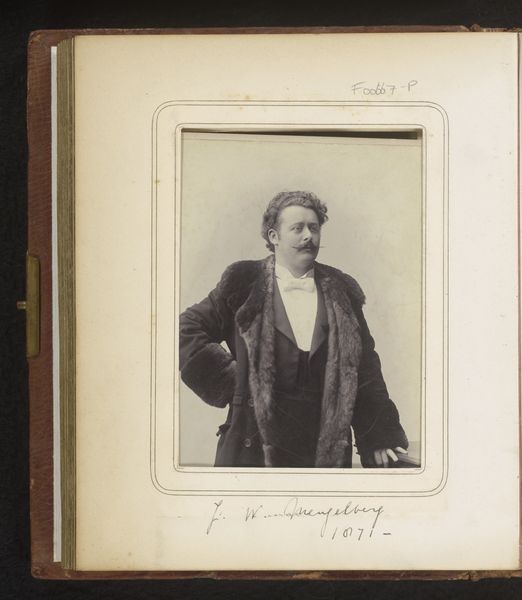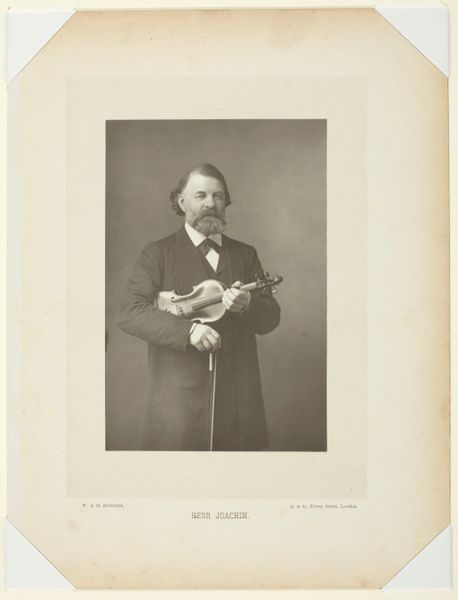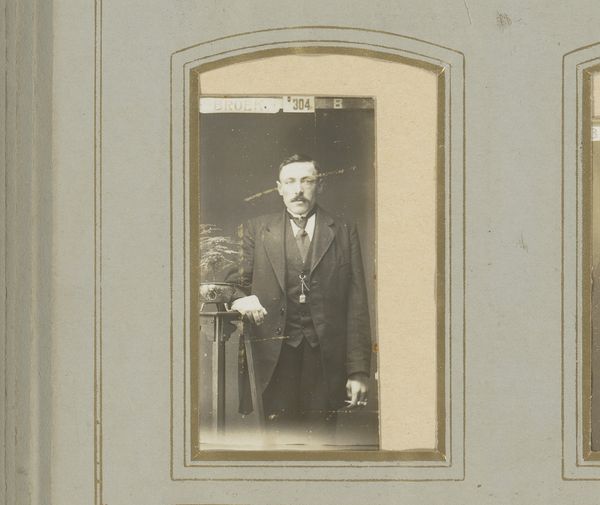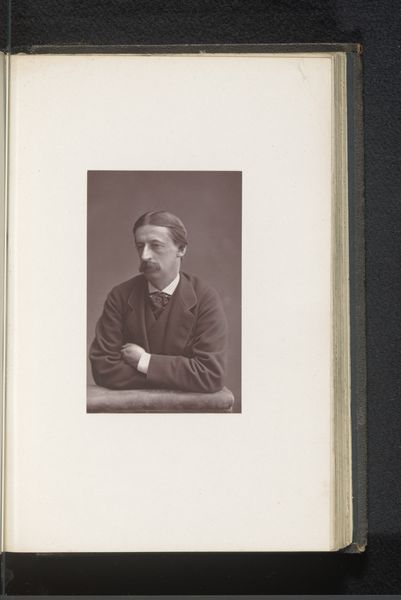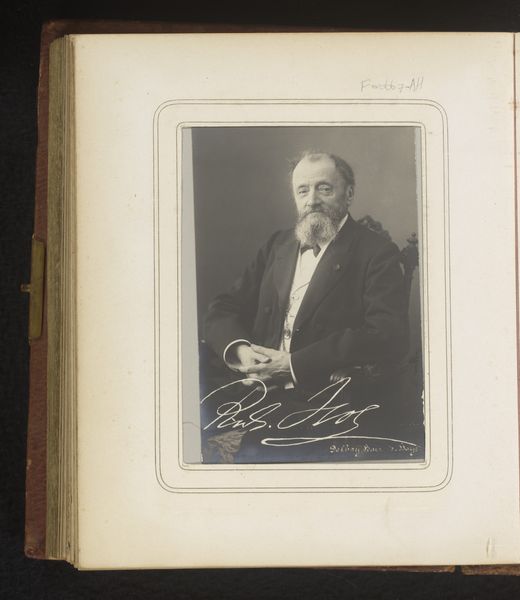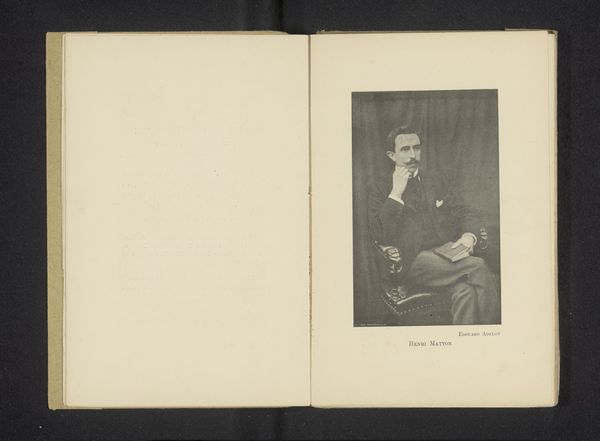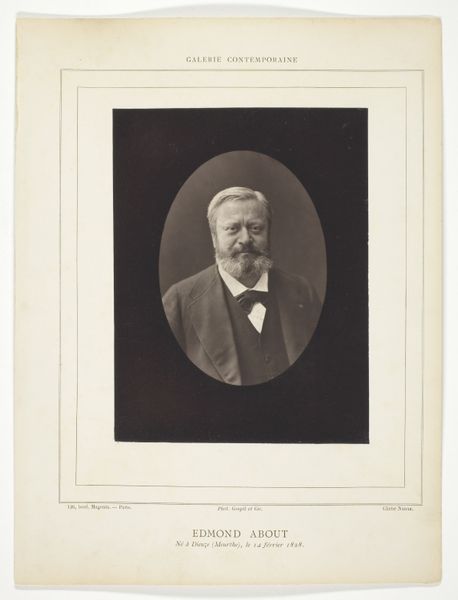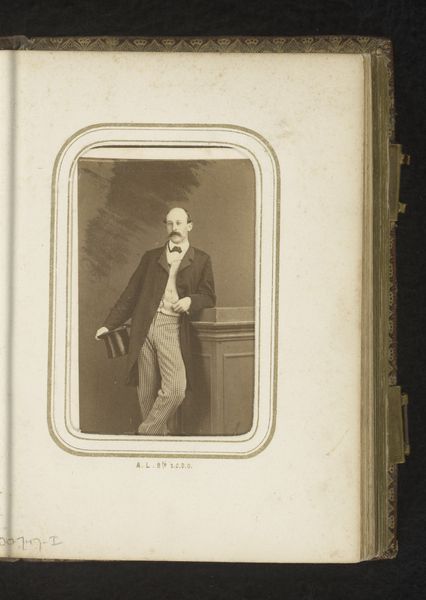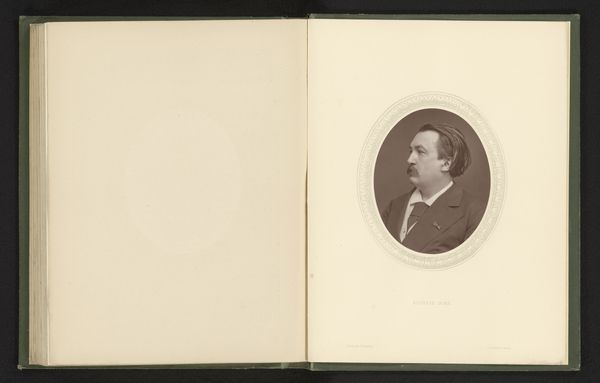
photography
#
portrait
#
still-life-photography
#
art-nouveau
#
photography
#
coloured pencil
#
academic-art
#
realism
Dimensions: height 363 mm, width 290 mm
Copyright: Rijks Museum: Open Domain
Editor: Here we have "Portret van musicus Henri W. Petri," dating from around 1890 to 1910, held at the Rijksmuseum. It's a photographic portrait. I'm immediately struck by the sitter's confident gaze and the crispness of the photograph, the balance between light and shadow. What compositional elements stand out to you? Curator: The photograph demonstrates a fascinating study of contrasts. The stark monochrome emphasizes tonal variations, from the velvety darkness of the background to the sharp highlights on Petri's face and hands. Notice how the diagonal line created by the violin's neck intersects with the verticality of his stance, creating a dynamic tension within the rectangular frame. It is almost constructivist in its semiotic encoding. Editor: Interesting, I hadn't considered the geometric aspects. So, you see the placement of the violin as contributing to the picture’s formal qualities rather than its narrative? Curator: Precisely. Consider the semiotics of the violin – it represents Petri's profession. Its placement, almost an appendage of his arm, reinforces his identity, whilst it disrupts our reading of the work by obscuring the arm itself. What of Petri himself? Editor: Now that you mention it, I find it noteworthy that the eye is drawn more to the texture and tones in his clothing rather than Petri’s own features. Curator: Yes, observe the corded texture of the trousers. The focus isn't merely on representation, it seems to use the subject to create an image that prioritizes structure. It almost negates aspects of what many viewers would see as a defining element within a portrait. Editor: So, we’re not meant to look for any kind of emotional story in it. Curator: Form precedes emotional content in this analysis. The balanced composition and striking contrast encourage us to view this image through the lens of line, form, and texture rather than as a mirror reflecting an individual’s essence. Editor: Fascinating. It’s like seeing a portrait deconstructed into pure visual elements. I definitely understand it differently now.
Comments
No comments
Be the first to comment and join the conversation on the ultimate creative platform.
